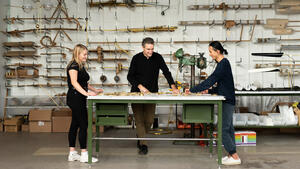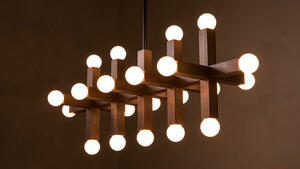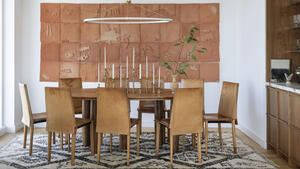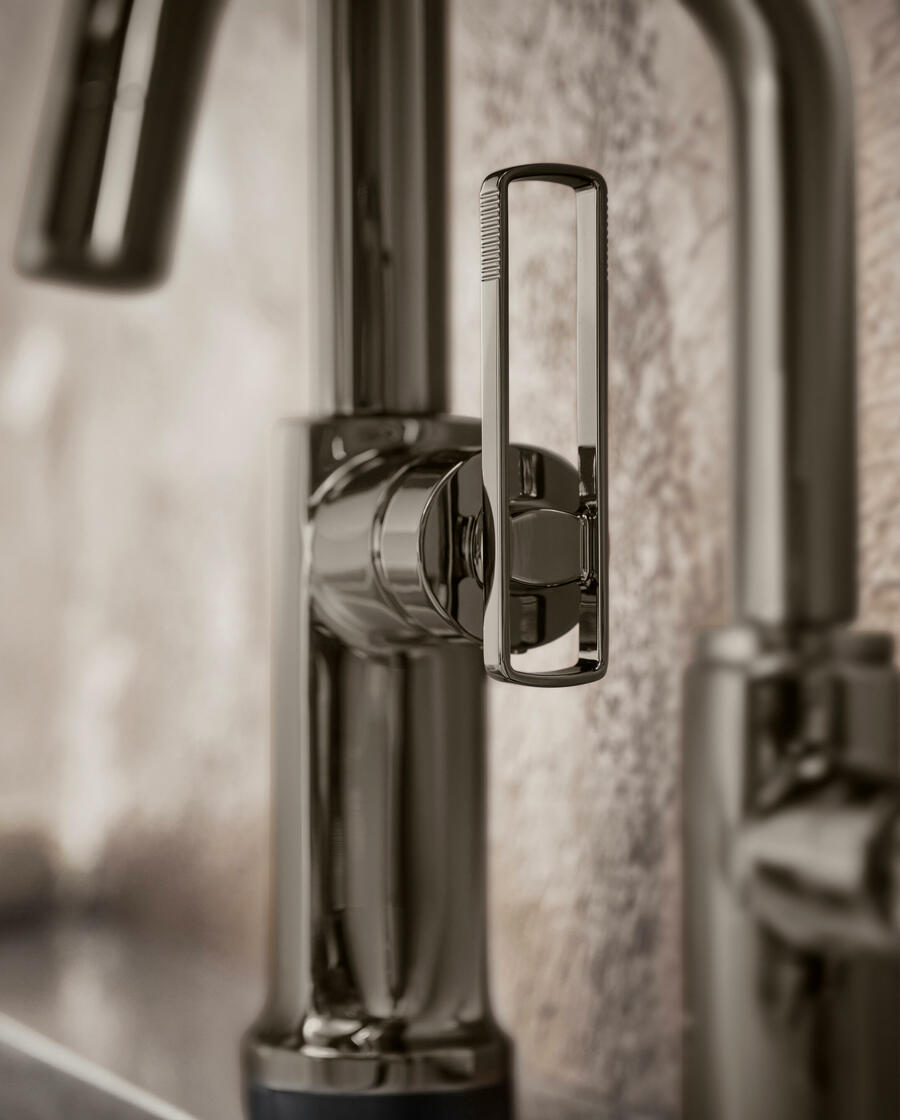_(1).jpg)
Barbora Žilinskaitė draws inspiration from people and their emotions. The Brussels-based designer is a keen observer of how humans connect with one another, and more specifically, how they engage with the items that surround them. “My mission is to make our interactions with objects more joyful, meaningful and magical,” she tells Business of Home.
Growing up in Kaunas—one of the biggest cities in Lithuania—Žilinskaitė began experimenting with sculpture, textiles and printmaking as a teenager. In college, she studied product design at the Vilnius Academy of Arts, while interning for an array of esteemed design studios, including Valentin Loellmann, Vaust and Analogia Project. “Working with all of them motivated me to start my own studio,” she says of the internships. “I loved seeing how art and design could merge in objects.”
In 2020, she launched her namesake studio in Brussels with the Roommates collection—anthropomorphic furnishings ranging from a footlike stool to a coffee table inspired by a face. “I aimed to play with simplified shapes of body parts as a way of personally relating to furniture,” says Žilinskaitė.

All of her designs begin as sketches that are then used to craft plasticine models and eventually hand-sculpted furniture pieces. The artist prefers to work with unconventional materials, particularly a mixture of sawdust, pigments and glue, which dries into a hard, porous substance that resembles stone. “The sculpting process is very intuitive and free—I just let my hands decide,” says the artist. “The materials add a sense of liveliness to the figurative shapes.”

Though form plays the most important role in her designs, function runs a very close second. “While shape may hold a slight priority for me, if it is not functional enough, I persist in refining the form until a solution is found,” says Žilinskaitė. “Sometimes it can be frustrating, but overall, I think it only pushes me to go out of my comfort zone and think outside the box.”
Her latest endeavor, “Chairs Don’t Cry”—a solo exhibition on display through March 30 at the Friedman Benda gallery in Los Angeles—features nine figurative designs including a sinuous limb-clad sideboard and an undulating bookcase bedecked in interlocking hands, some showcased on top of teardrop-shaped floorcoverings. “I aimed to create an atmosphere where viewers could see objects in a new way, while blurring the boundaries between animate and inanimate,” she says. “The title plays into emotion, almost provoking the question of whether objects can feel. The whole gallery space is filled with [references to] tears, so, you’re walking through a flood of tears as you walk through the show.”
The artist will also unveil a bespoke piece at Design Miami/Basel in Switzerland this summer. “I plan to keep exploring new designs and materials in the future,” says Žilinskaitė. “The creative part of me wouldn’t allow otherwise.”
If you want to learn more about Barbora Žilinskaitė, visit her website or Instagram.




























